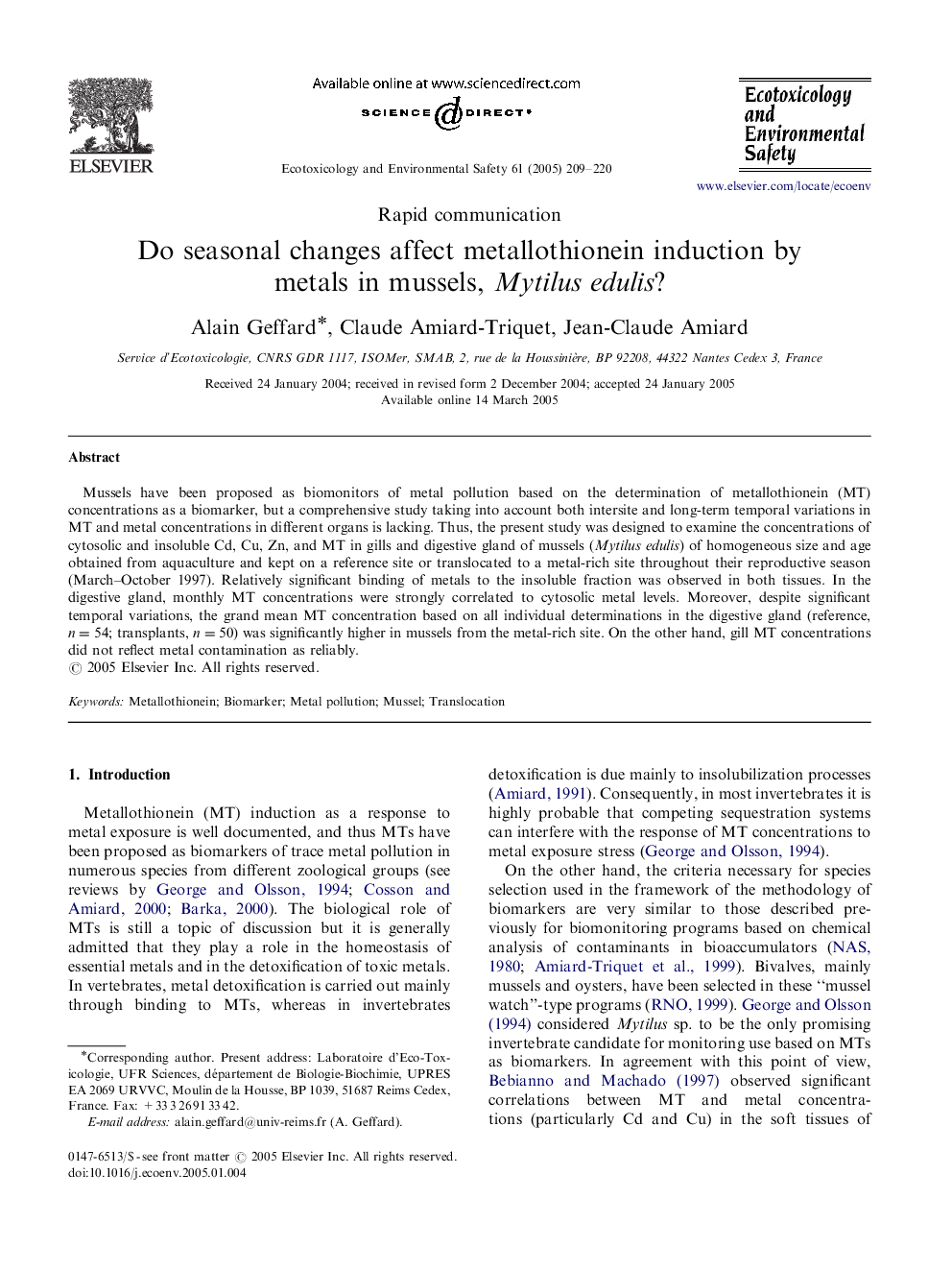| Article ID | Journal | Published Year | Pages | File Type |
|---|---|---|---|---|
| 9454857 | Ecotoxicology and Environmental Safety | 2005 | 12 Pages |
Abstract
Mussels have been proposed as biomonitors of metal pollution based on the determination of metallothionein (MT) concentrations as a biomarker, but a comprehensive study taking into account both intersite and long-term temporal variations in MT and metal concentrations in different organs is lacking. Thus, the present study was designed to examine the concentrations of cytosolic and insoluble Cd, Cu, Zn, and MT in gills and digestive gland of mussels (Mytilus edulis) of homogeneous size and age obtained from aquaculture and kept on a reference site or translocated to a metal-rich site throughout their reproductive season (March-October 1997). Relatively significant binding of metals to the insoluble fraction was observed in both tissues. In the digestive gland, monthly MT concentrations were strongly correlated to cytosolic metal levels. Moreover, despite significant temporal variations, the grand mean MT concentration based on all individual determinations in the digestive gland (reference, n=54; transplants, n=50) was significantly higher in mussels from the metal-rich site. On the other hand, gill MT concentrations did not reflect metal contamination as reliably.
Related Topics
Life Sciences
Environmental Science
Environmental Chemistry
Authors
Alain Geffard, Claude Amiard-Triquet, Jean-Claude Amiard,
